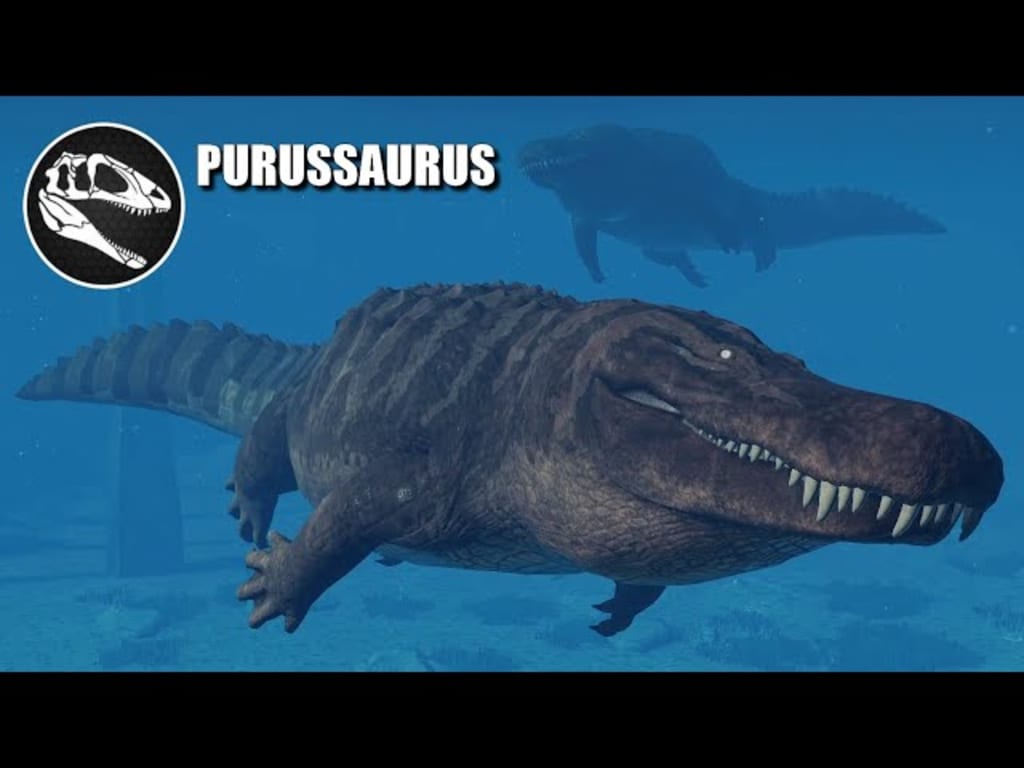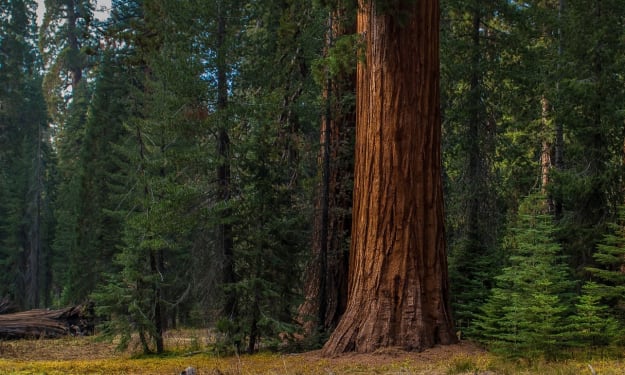Destructive Creatures You'll Absolutely love To Know Are Wiped out; Chapter 2
The world's brimming with a few startling animals who'd experience no difficulty making a fast dinner out of us people. However, as frightening a few creatures today might appear, there once existed considerably greater, badder, and way additional unnerving monsters

Number 14, Daeodon.
All around, pigs these days are really innocuous,
however, that is not forever been the situation.
In the event that we turn the timekeepers back quite a while back,
Daeodon, or 'awful pigs',
were unleashing destruction in North America.
This savage came in at an enormous 1,650 pounds,
stood almost six feet tall at the shoulder,
furthermore, was 10 feet in length, giving it a rhino-like form.
Nonetheless, not at all like rhinos, these folks didn't stick
to eating vegetation.
See those front oriented eye attachments planned
to monitor the prey they're pursuing?
Definitely, these pigs were hunters.
Ongoing examination recommends that because of their absence of paws,
they brought down their prey by running close by it,
prior to smashing into it with savage power.
Similar to nature's form of a cop pursue.
To make matters really upsetting, these strong piggies
likewise accompanied canines
that were approximately 10 inches long,
intended for destroying tissue.
Researchers accept that Daeodon in the end went terminated
around quite a while back,
because of expanded worldwide temperatures,
exhausting both vegetation and prey creatures.
Furthermore, it's similarly as well.
All in all, I somewhat like pork that won't attempt to eat me.
Number 13, Spinosaurus.
What do you get on the off chance that you blend a crocodile in with a T-Rex?
On the off chance that you addressed 'bad dreams', you're correct!
Since it'd presumably seem to be this beast
that really existed, also called a Spinosaurus.
Arriving at lengths up to 59 feet
furthermore, gauging a titanic 22 tons,
this cumbersome monster is viewed as
the biggest flesh eating dinosaur
to have at any point strolled the earth.
However, their dinner inclination wasn't as a rule
earthly creatures.
Scientists accept that these dinos,
hailing from North Africa, were water inhabitants
that basically nibbled on a banquet of off-putting food,
counting goliath coelacanths, sawfish, and lungfish.
To assist with this specific eating regimen,
Spinosaurus developed a long crocodile-like nose,
loaded with astonishing, six-inch-long tapered teeth,
adjusted for penetrating tricky off-putting prey.
It's not known precisely exact thing the sail comprised of spines
projecting from its vertebrae was utilized for.
However it's conjectured it might have acted
like the dorsal balance of a fish for security in the water.
Be that as it may, around a long time back, an Earth-wide temperature boost evaporated
the North African marshlands.
What's more, with their off-putting feast gone,
these monsters couldn't adjust to eat other prey.
I bet any swimmers watching aren't precisely miserable about that.
Number 12, Purussaurus.
From crocodile-like dinosaurs to well...crocodiles!
Crocs might look already overwhelming for all intents and purposes,
be that as it may, they're nothing contrasted with the Purussaurus.
This greedy waterway goliath once estimated in
at a mind whirling 35 feet in length;
that is a similar size as a school transport.
However, while it probably won't have been a similar level as one,
it was still two times the length of a saltwater crocodile.
Obviously, it expected to eat...a part.
Purussaurus went through around 90 pounds of food day to day -
multiple times the necessity for the cutting edge American gator.
Also, in the event that you're considering what precisely Purussaurus ate,
the basic response is...anything.
From vehicle estimated Stupendemys turtles to goliath ground sloths,
the world was their smorgasbord.
Fortunately for them, their voracious craving
was helped by their strong chomp.
Scientistss determined that the Purussaurus' nibble
was identical to applying 11.5 lots of tension,
giving it a nibble multiple times more grounded
than that of an extraordinary white.
What's more, I thought "Jaws" was alarming.
Number 11, Utahraptor.
On the off chance that you've seen "Jurassic Park",
you'll know exactly the way that unnerving Velociraptors used to be.
In any case, they're really the more modest cousin of Utahraptors.
These bird-like dinosaurs date back 125 million years,
furthermore, faced 18 feet in length, making them the length
of a standard steel trailer,
be that as it may, with a mental toughness.
To assist with that killing, they came furnished
with a 15-inch paw on each foot.
Only one kick from this awful kid
was equipped for cutting through a creature.
Furthermore, best of luck attempting to run from these folks.
In light of their thin legs and the speed of dinosaurs
of comparable sizes, it's trusted that Utahraptors
could approach 30 miles each hour.
Albeit fossilized feathers haven't yet been found
with Utahraptor bones, scientistss are sure
that they had them in view of quill safeguarding
in related dromaeosaurid species.
Number 10, Smilodon.
While we're on the subject of famous actors,
who could fail to remember Diego the Sabretooth feline
from the interminable series of "Ice Age" films.
Presently, Diego might look cuddly on screen,
in any case, attempting to cuddle up to a genuine Sabretooth feline
would have left you for certain serious scars.
Smilodon, the most well known of the Sabretooth feline species,
lived in the Americas a few 2.5 quite a while back.
The eight inch, tooth like teeth standing out
of these huge feline's mouths look absolutely frightening,
however, these upper canines aren't accepted to have stuffed
a very remarkable punch.
PC outputs of the fossilized skulls of sabretooth felines
uncovered that they created a biteforce of only 220 pounds,
which is just somewhat more grounded than a human chomp.
To compensate for this, the Smilodon had relatively
longer front legs and a significantly more strong form,
contrasted with enormous felines today.
In any case, brutal teeth couldn't save the Smilodon
from the impacts of environmental change and people,
who overhunted the feline's prey,
ultimately prompting its eradication a long time back.
Number 9, Megapiranha.
Strolling on ancient land would have been startling,
however, swimming in the waterways would have been way more regrettable.
Around 8 to a long time back in the Late Miocene,
you would've had the frightfulness of going over Megapiranha
in the streams of South America.
Also, yes as the name proposes,
these broadly meat eating fish were tremendous.
How enormous?
They developed to a disturbing 28 inches, north of two feet in length,
over two times the size of current piranhas.
They weighed around 22 pounds,
making them multiple times heavier
than the current lively fish.
Yet, size isn't the main thing that made these fish unnerving.
Based off the nibble power of living dark piranhas,
researchers gauge that the Megapiranha
would've eaten down with a stunning power
of 1,000 pounds of power.
That would give its chomp a similar whack
of that of a little incredible white shark,
in spite of the fanged fish just gauging
one 40th of an incredible white.
Out of nowhere, normal piranhas don't appear to be so terrible.
Number 8, Cameroceras.
So we currently know swimming in ancient waters
would have been a poorly conceived notion, yet it can constantly deteriorate,
because of the old, outsider looking Cameroceras.
Cameroceras lived during the Ordovician time frame,
exactly a long time back and was an early cephalopod;
a kind of mollusk order that incorporates
the more recognizable octopus, squid, and cuttlefish.
The eye-getting component of this eccentric person
was its tremendous 36-foot-long shell,
used to safeguard the Cameroceras primary body.
Be that as it may, being a meat eater, how precisely did this thing chase?
Regardless of their size, it's trusted that these cephalopods
would lie on a level plane, calmly hanging tight for a casualty.
Then, at that point, when a marine feast came sufficiently close,
they'd rapidly snare it.
With their three-foot-long limbs,
it maneuvered prey into its huge throat,
similar as current cephalopods.
In the wake of pulling in its catch,
like trilobites and ocean scorpions,
it would crunch their exoskeleton
with its hard keratinous mouth,
prior to grating out delicate tissue from inside the prey's shell.
Fortunately, the rule of the Cameroceras was brought
to an end around quite a while back,
at the point when the Late Ordovician mass termination
wiped out almost 85% of every marine specie.
Presently I can swim without the feeling of dread toward having a monster cephalopod
smash my skull like a pecan.
Number 7, Megatherium Americanum.
Sloths are little and charming, isn't that so?
Indeed, amazingly, their progenitor Megatherium Americanum
is something contrary to them in pretty much every manner.
These monster sloths meandered through South America
somewhere in the range of quite a while back.
They remained at an overwhelming 12 feet tall,
what's more, tipped the scales at a robust four tons
around a similar load as an elephant.
Also, on the off chance that that wasn't adequately strange,
almost certainly, Megatheriums were bald to forestall them
from overheating.
Man, they look sad!
To exacerbate the situation,
they accompanied seven-inch paws.
Goodness, these folks are truly solidifying their place
in my bad dreams.
Fortunately, researchers don't trust that Megatherium
were meat eating.
All things considered, almost certainly, their paws would've been utilized
to swipe down tall vegetation.
While it's at present not satisfactory whether their eating regimen
incorporated some meat, it is conceivable that they at times
searched off remains.
A few hypotheses go significantly further, estimating that Megatherium
would effectively chase more modest herbivores
by flipping them over and cutting them open with its hooks.
Yet, amazingly, researchers trust that people
as a matter of fact chased these monsters.
A killing site in Argentina uncovered
that close to a long time back, a gathering of people chased
furthermore, killed a monster sloth prior to leaving the creature's bones
behind alongside their butchering blade.
Eventually, human hunting and the impacts of environmental change
exhausted their vegetation food source
furthermore, completely destroyed this uber sloth.





Comments
There are no comments for this story
Be the first to respond and start the conversation.